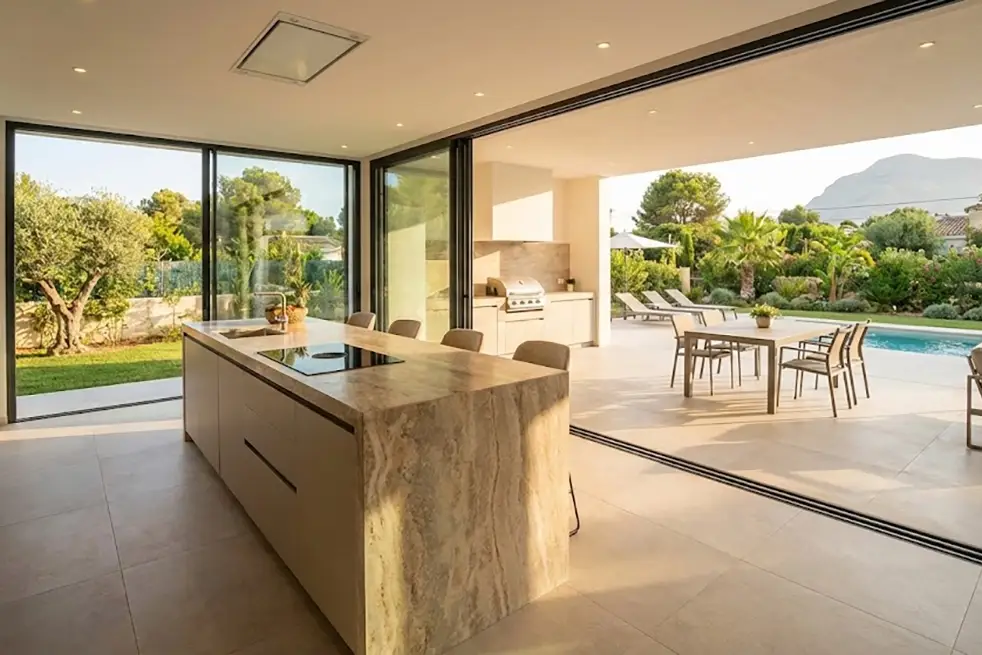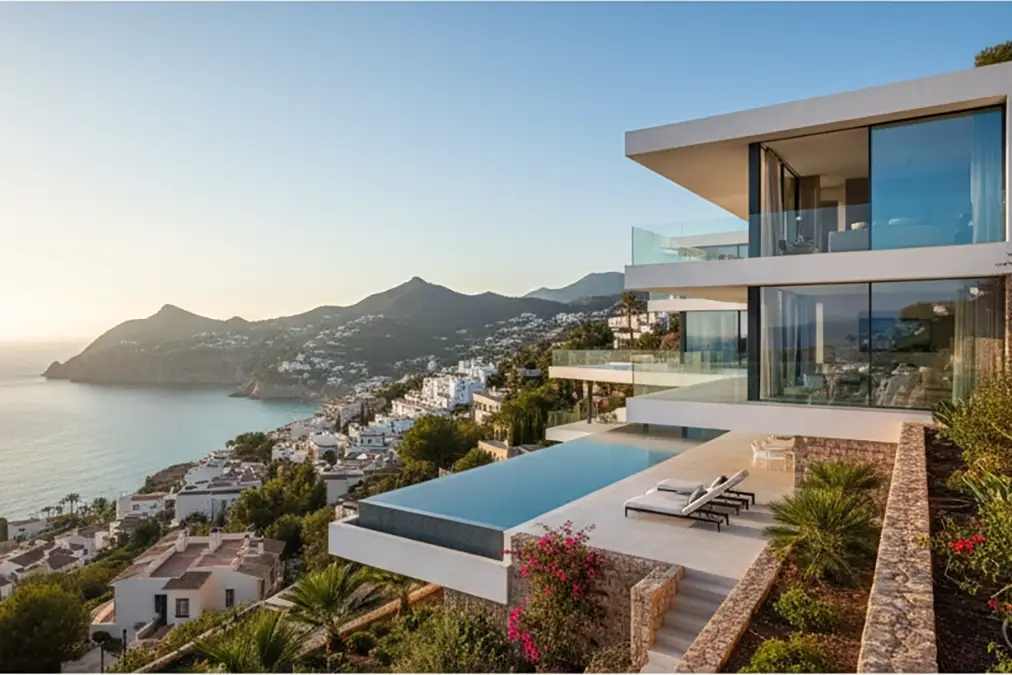The desire to live in open spaces, surrounded by nature and away from the hustle and bustle of urban life, has grown significantly in recent years. In the Comunidad Valenciana, many people find this ideal in the inland areas of the Costa Blanca, in municipalities such as Dénia, Pedreguer, Benissa, Teulada or Pego, where rural land is widely available. But then the big question arises:
Is it possible to build on rural land?
The answer is not straightforward, but it’s not a definitive no either. Valencian legislation sets out very specific conditions for building on this type of land, and understanding them is key to avoiding mistakes, frustration or legal penalties.
At La Quinta Fachada Arquitectura, we have advised and developed projects for clients wishing to build on rural plots. In this article, we explain what is and isn’t possible, and how to approach your project with confidence.
What is considered rural land?
According to the Valencian Urban Planning Law (LOTUP), rural land —also referred to as non-developable land— is land designated for the protection of the territory, either due to its natural, agricultural, scenic or forest value, or because it forms part of reserves for future planned developments.
It cannot be urbanised or freely subdivided, and its buildability is highly restricted. However, under certain circumstances, the law does allow for the construction of specific types of buildings linked to rural, tourist or residential uses, provided that technical and regulatory requirements are met.
When is it possible to build on rural land in the Comunidad Valenciana?
In general, building on rural land is only permitted if one of the following conditions is met:
1. Isolated dwellings on common non-developable land
The construction of a single detached dwelling is allowed, provided that:
-
The plot is at least 10,000 m²
-
The land is not protected (landscape, agricultural or forest protection)
-
The building complies with the applicable regulations regarding setbacks, height and maximum buildable area
-
No urban-style subdivision or grouping of homes is created
This type of development is commonly referred to as a private interest dwelling or rural dwelling, and must be designed to integrate with the surrounding environment.
2. Agricultural or farm-related buildings
It is possible to build warehouses, barns or auxiliary structures if they are justified for agricultural, livestock or forestry use, and the land is actively in use for such purposes.
3. Dwellings linked to rural tourism activities
In certain municipalities, the refurbishment or restoration of existing rural buildings for use as tourist accommodation or rural lodgings is permitted, subject to strict conditions.
What permits do you need to build legally?
Unlike standard urban licences, building on rural land requires:
-
A full technical project signed and stamped by a registered architect
-
A major works permit (licencia de obra mayor) issued by the local Town Hall
-
A favourable report from the Regional Department of Urban Planning or the Environment, if sector-specific regulations apply
-
Proof of land ownership and compliance with the minimum plot size
-
In many cases, a landscape integration study (estudio de integración paisajística)
The process can be lengthy and technically complex, so it is essential to seek advice from an architectural firm with local experience and direct contact with municipal planning officers.
What if there is already a building on rural land? Can I renovate or extend it?
It’s common for rural plots to have existing constructions: country houses, storage buildings, or small old structures. But can these be legalised, renovated, or extended?
The answer depends on several factors:
-
If the building is registered and has an original permit: it can generally be renovated and, in some cases, extended.
-
If it predates the implementation of the LOTUP and the planning offence is time-barred: it may be possible to legalise it through a legalisation project.
-
If it is illegal and recent: it cannot be extended or registered and may even be subject to a demolition order.
In all cases, a prior urban planning assessment is strongly recommended before starting any works.
Technical considerations to bear in mind
Beyond urban planning regulations, building on rural land involves several technical factors:
-
Accessibility: many plots are remote or lack proper road access.
-
Service connections: electricity, drinking water, and sewage systems are not always available.
-
Alternative systems: wells, solar panels, septic tanks may be required.
-
Fire protection: some areas require specific self-protection plans.
-
Landscape integration: minimising the visual impact of the construction is compulsory.
These elements add complexity to the project, so it’s essential to address them from the very beginning.
Advantages and risks of building on rural land in the Comunidad Valenciana
Advantages:
-
Greater privacy and connection with nature
-
Lower land prices compared to urban areas
-
Fully bespoke design, free from development constraints
-
Potential for a sustainable and peaceful lifestyle
Risks:
-
More complex legal and administrative procedures
-
Limited or non-existent infrastructure
-
Potential future environmental restrictions
-
Lower market liquidity if you wish to sell later on
Yes, you can build — but not just anywhere, or in any way
It is possible to build on rural land in the Comunidad Valenciana, but it’s neither a simple nor immediate process. You must comply with local regulations, justify the proposal, and ensure that the project integrates with the natural surroundings.
At La Quinta Fachada Arquitectura, we offer personalised guidance from the very first consultation. We analyse each plot, verify its legal status, define the safest strategy, and design sustainable, technically viable projects tailored to both client and context.
Do you own rural land and want to know if you can build on it?
We’ll be happy to assess its feasibility, define the best approach, and support you every step of the way — with clarity, honesty, and experience.




